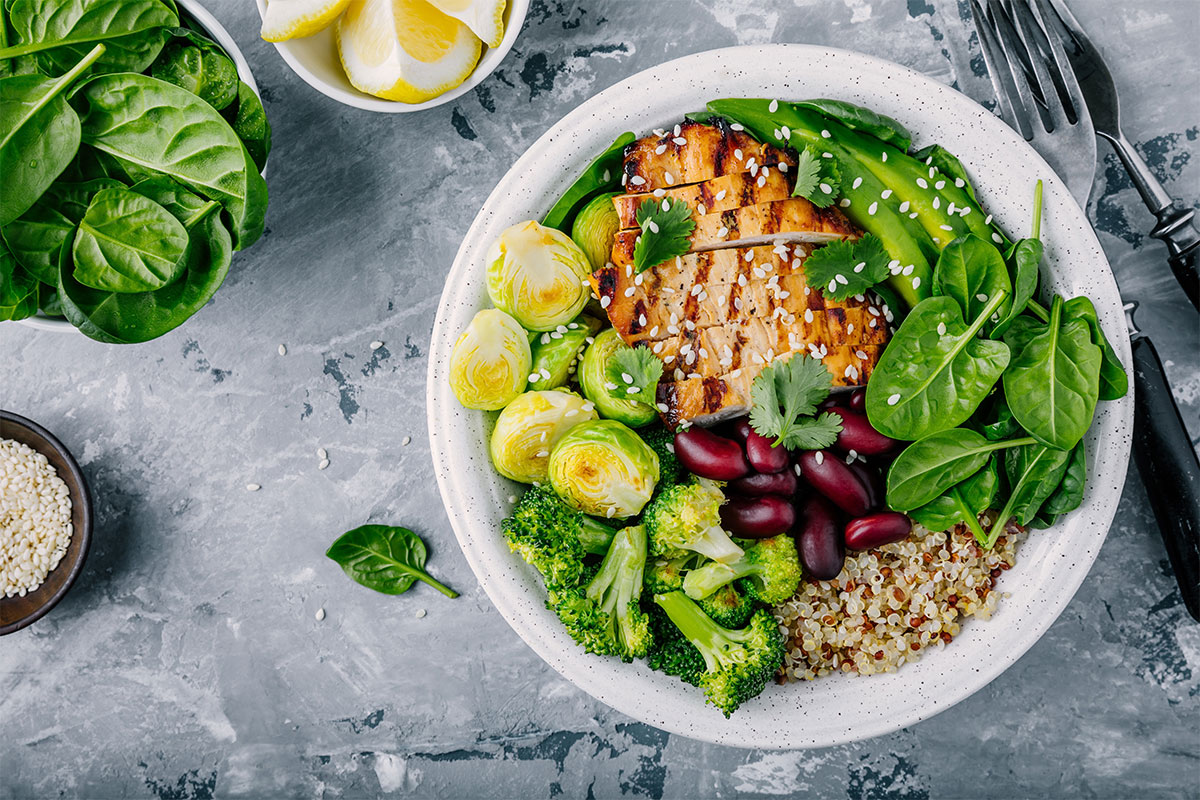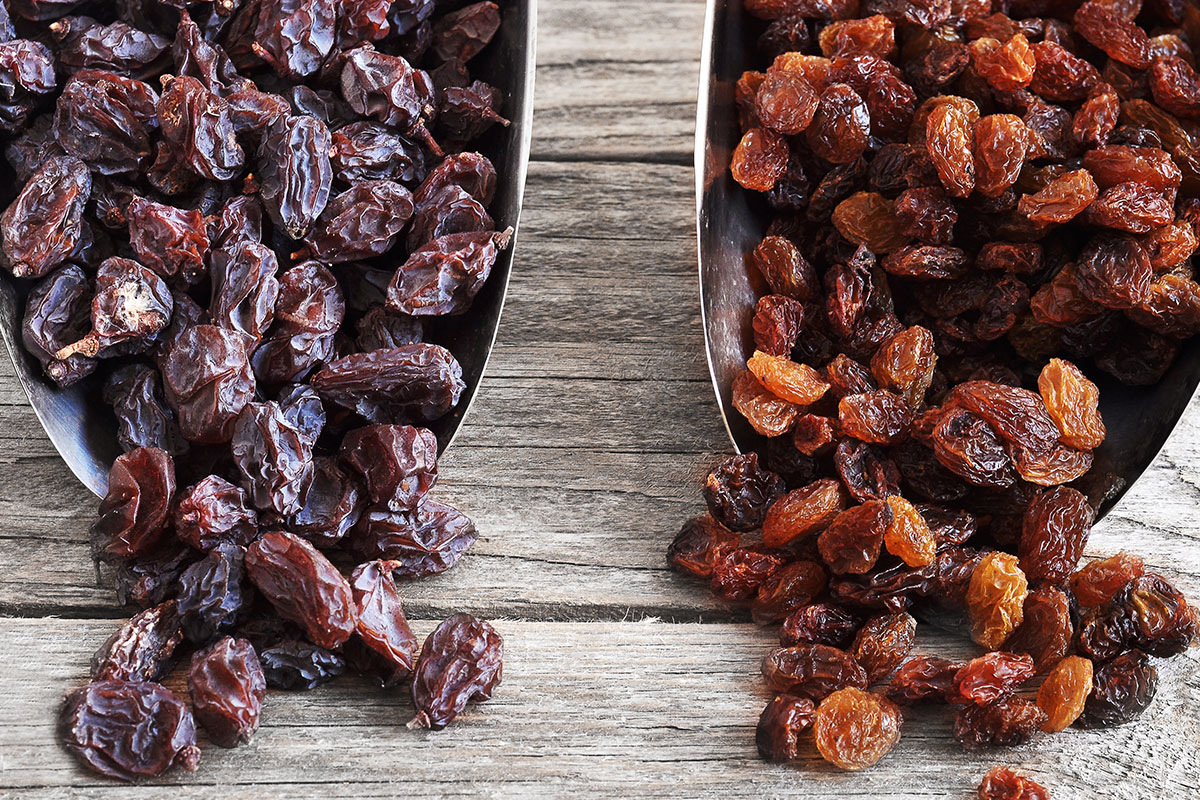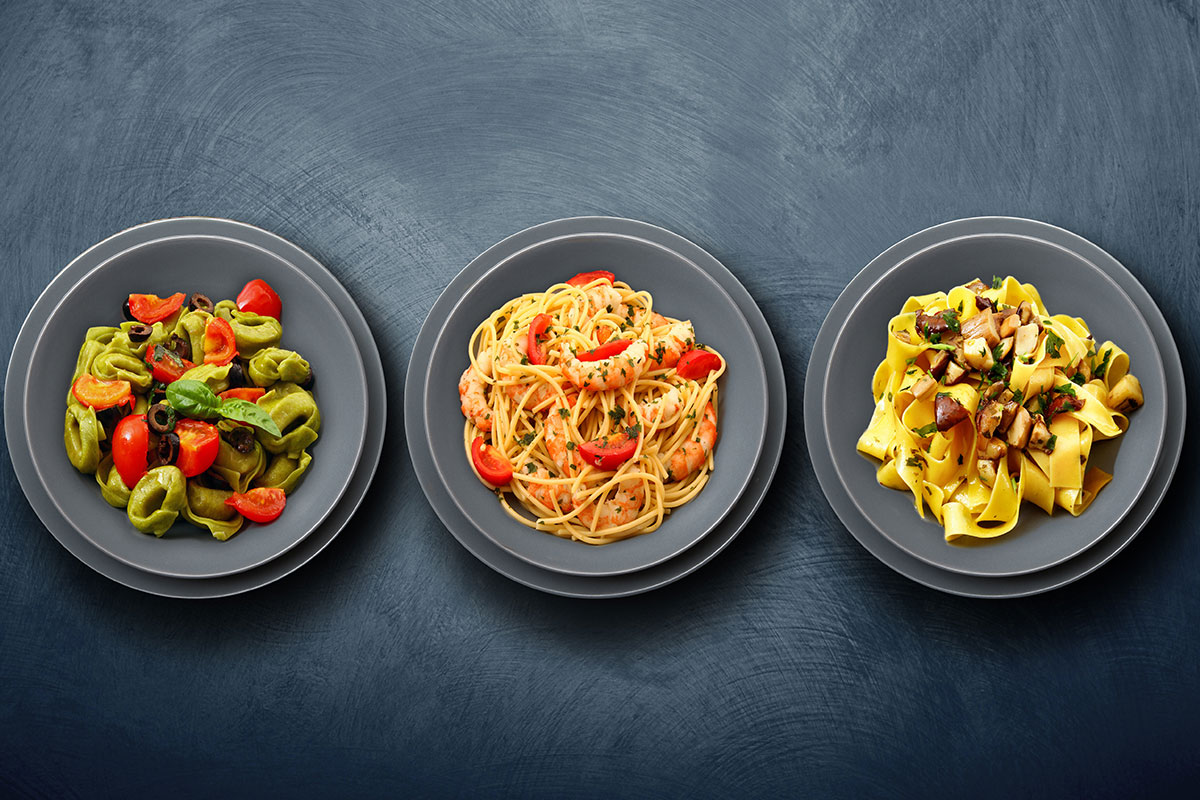Salt Grains for Muscle Gains?
Does liberally salting your food help you pump more iron in the gym? Registered Dietitian, Debbie James, investigates the claims!


I would like to know how I determine what my macro breakdown should be? How do I know how to calculate my split as far as protein/fats/carbs based on my weight & height? And what carbs are good for me? Female, Weight 170 lbs., Height 5’2’, Weightlift 5 days per week Cardio 3-5 times per week. I need help (guidance) with the nutrition part of my weight loss journey.
– Yolanda G.

Given your current exercise regimen, your estimated daily energy needs for weight loss are about 2,000 calories if 20-30 years old (subtract 75 calories per decade older). Not knowing anything about your present intake, I’d recommend a rough caloric distribution of 30% fat, 20% protein, and 50% carbohydrates. Breaking down the 2,000 calories would give us 67 gm fat, 100 gm protein and 250 gm carbohydrate per day.
I’m so glad you asked about which carbohydrates are good! That indicates you’re aware that quality matters as much as quantity – for all three macronutrients. Complex carbohydrates that are more wholesome (less refined) are preferred over processed sources. Think of oats, quinoa, corn, potatoes, and vegetables complimented by simple carbohydrates from fresh fruit and milk products.
Here’s a one-day sample 2,000 calorie menu providing 27% fat, 22% protein, and 51% carbs*:
3 Snacks –
* Calculated by Registered Dietitian Nutritionist using Fitday.com’s food log function. Findings were used along with RDN’s professional judgment.
– Debbie J., MS, RD
This article should not replace any exercise program or restrictions, any dietary supplements or restrictions, or any other medical recommendations from your primary care physician. Before starting any exercise program or diet, make sure it is approved by your doctor.
Some questions have been edited for length and/or clarity.
 Have a nutrition question? Our registered dietitian is ready to help!
Have a nutrition question? Our registered dietitian is ready to help!
Email nutrition@lafitness.com or submit your question below and it may be featured in an upcoming article!
Does liberally salting your food help you pump more iron in the gym? Registered Dietitian, Debbie James, investigates the claims!
Debbie James, RDN, helps answer a question about energizing snack options to pull athletes through the second half of a high energy workout.
Registered Dietitian, Debbie James, helps answer a reader’s question about a good nutrition guide for a healthy pregnancy.


I have been swimming for 30 minutes, 4 days a week, at 6AM. Is it best to not eat a sensible breakfast until after I swim? My son is a varsity state swimmer and says not to eat until mid or late morning so that my fat is burned as fuel first.
– Lorin and Diana S.

Tristen Alleman, one of our Pro Results® Personal Training Directors, shared that it’s best to do your morning aerobic work while fasted in order to burn more fat. Theoretically, since the body has been using glycogen overnight (fasted) while insulin levels drop, it shifts toward greater fat utilization in subsequent exercise. Most research supports this notion, though it may not be the case during energy restriction. There is also a lack of evidence showing resultant changes in body composition.
I’d advise eating your breakfast just after your morning workout and not waiting until mid-morning, both for your muscle recovery as well as for convenience – it’s easier to eat your sensible meal before getting to early work.
Resources:
– Debbie J., MS, RD
This article should not replace any exercise program or restrictions, any dietary supplements or restrictions, or any other medical recommendations from your primary care physician. Before starting any exercise program or diet, make sure it is approved by your doctor.
Some questions have been edited for length and/or clarity.
 Have a nutrition question? Our registered dietitian is ready to help!
Have a nutrition question? Our registered dietitian is ready to help!
Email nutrition@lafitness.com or submit your question below and it may be featured in an upcoming article!
Does liberally salting your food help you pump more iron in the gym? Registered Dietitian, Debbie James, investigates the claims!
Debbie James, RDN, helps answer a question about energizing snack options to pull athletes through the second half of a high energy workout.
Registered Dietitian, Debbie James, helps answer a reader’s question about a good nutrition guide for a healthy pregnancy.


What are the good and bad points of sun-dried raisins?
– Anthony A.

Raisins are typically from Thompson Seedless Grapes in California that have been sun-dried (on vine or on paper trays), shade-dried or mechanically dehydrated. Regardless of the drying method, raisins usually undergo additional processing such as rinsing, stem removal and in the case of golden raisins, the addition of sulfur dioxide (to retain color). The benefit of sun-drying to a dark brown color is that the raisins are not chemically treated.
A ¼ Cup serving of raisins provide approximately 120 calories, 2 gm fiber, 310 mg potassium, 6% DV iron, 2% DV calcium, and antioxidants known as catechins. Depending on your perspective or weight goals, the energy density of raisins could be a good or bad point. Though they are more sugar-rich (by weight) than grapes, their vitamins and minerals are more concentrated, too. This is true of all dried fruits versus fresh.
Resources:
– Debbie J., MS, RD
This article should not replace any exercise program or restrictions, any dietary supplements or restrictions, or any other medical recommendations from your primary care physician. Before starting any exercise program or diet, make sure it is approved by your doctor.
Some questions have been edited for length and/or clarity.
 Have a nutrition question? Our registered dietitian is ready to help!
Have a nutrition question? Our registered dietitian is ready to help!
Email nutrition@lafitness.com or submit your question below and it may be featured in an upcoming article!
Does liberally salting your food help you pump more iron in the gym? Registered Dietitian, Debbie James, investigates the claims!
Debbie James, RDN, helps answer a question about energizing snack options to pull athletes through the second half of a high energy workout.
Registered Dietitian, Debbie James, helps answer a reader’s question about a good nutrition guide for a healthy pregnancy.


I don’t understand the different types of olive oil. There is robust, extra virgin, virgin, refined, etc. Is one better for cooking? What about using as a dip for bread? Can olive oil be used in cooking? I know olive oil is supposed to be better for you, but I fear I’m using the wrong types of this oil in my cooking!

Olive oil provides the same calories from fat that other oils do, though its cardiovascular health benefit is in the favorable ratio of unsaturated fats. Olive oil’s high ratio of monounsaturated fat is linked to reduced blood LDL cholesterol which is associated with a lower risk of heart disease.
The terms you mention have to do with the processing of olives into oil. There are over 50 olive varieties – thank the Greek gods that their oils are not kept separate or it would get really confusing! Here’s a rundown of what the different olives oils are and how best to use them:
At present, the USDA’s National Nutrient Database doesn’t differentiate between the various types of olive oil and provides nutritional information for a singular standard reference “olive oil.”
References:
– Debbie J., MS, RD
This article should not replace any exercise program or restrictions, any dietary supplements or restrictions, or any other medical recommendations from your primary care physician. Before starting any exercise program or diet, make sure it is approved by your doctor.
Some questions have been edited for length and/or clarity.
 Have a nutrition question? Our registered dietitian is ready to help!
Have a nutrition question? Our registered dietitian is ready to help!
Email nutrition@lafitness.com or submit your question below and it may be featured in an upcoming article!
Does liberally salting your food help you pump more iron in the gym? Registered Dietitian, Debbie James, investigates the claims!
Debbie James, RDN, helps answer a question about energizing snack options to pull athletes through the second half of a high energy workout.
Registered Dietitian, Debbie James, helps answer a reader’s question about a good nutrition guide for a healthy pregnancy.


I have a question about starchy carbs. I was reading an article online that said to eat starchy carbs (i.e. brown rice, sweet potatoes) only on days when I lift weights or do cardio. It said to avoid them on rest days and stick with veggies for carbs on those days. What’s your opinion on this?
– James B.

Thanks for asking my opinion, James. There is no nutritional minimum for starches as a source, only for the carbohydrates they contain (at least 130 grams daily*). So, if a person can meet his/her carbohydrate needs – which may still be quite high on rest days – I’m all for maximizing vegetables along with fruit and milk products for carbs. Although it would provide lots of micronutrients, consuming 300 grams of carbohydrate only from vegetables would probably overwhelm your gastrointestinal system.
Starch (complex carbohydrate) from grains, tubers, legumes and seeds, and products made from them (like pasta, cereals, bread and fries) provides a concentrated source of extended energy suitable for physical activity. Although I follow the logic to reduce carbs on non-workout days, there is no evidence that replacing starches intermittently will benefit your performance or physique. Besides, you’re still physically active outside the gym, right? If you’re completely sedentary in bed all day but not sick, then feel free to skip them on your off days.
* Institute of Medicine, Food and Nutrition Board. Dietary Reference Intakes: energy, carbohydrates, fiber, fat, fatty acids, cholesterol, protein, and amino acids. Washington: National Academies Press; 2002
– Debbie J., MS, RD
This article should not replace any exercise program or restrictions, any dietary supplements or restrictions, or any other medical recommendations from your primary care physician. Before starting any exercise program or diet, make sure it is approved by your doctor.
Some questions have been edited for length and/or clarity.
 Have a nutrition question? Our registered dietitian is ready to help!
Have a nutrition question? Our registered dietitian is ready to help!
Email nutrition@lafitness.com or submit your question below and it may be featured in an upcoming article!
Does liberally salting your food help you pump more iron in the gym? Registered Dietitian, Debbie James, investigates the claims!
Debbie James, RDN, helps answer a question about energizing snack options to pull athletes through the second half of a high energy workout.
Registered Dietitian, Debbie James, helps answer a reader’s question about a good nutrition guide for a healthy pregnancy.
Be the first to know about exclusive
content, deals and promotions